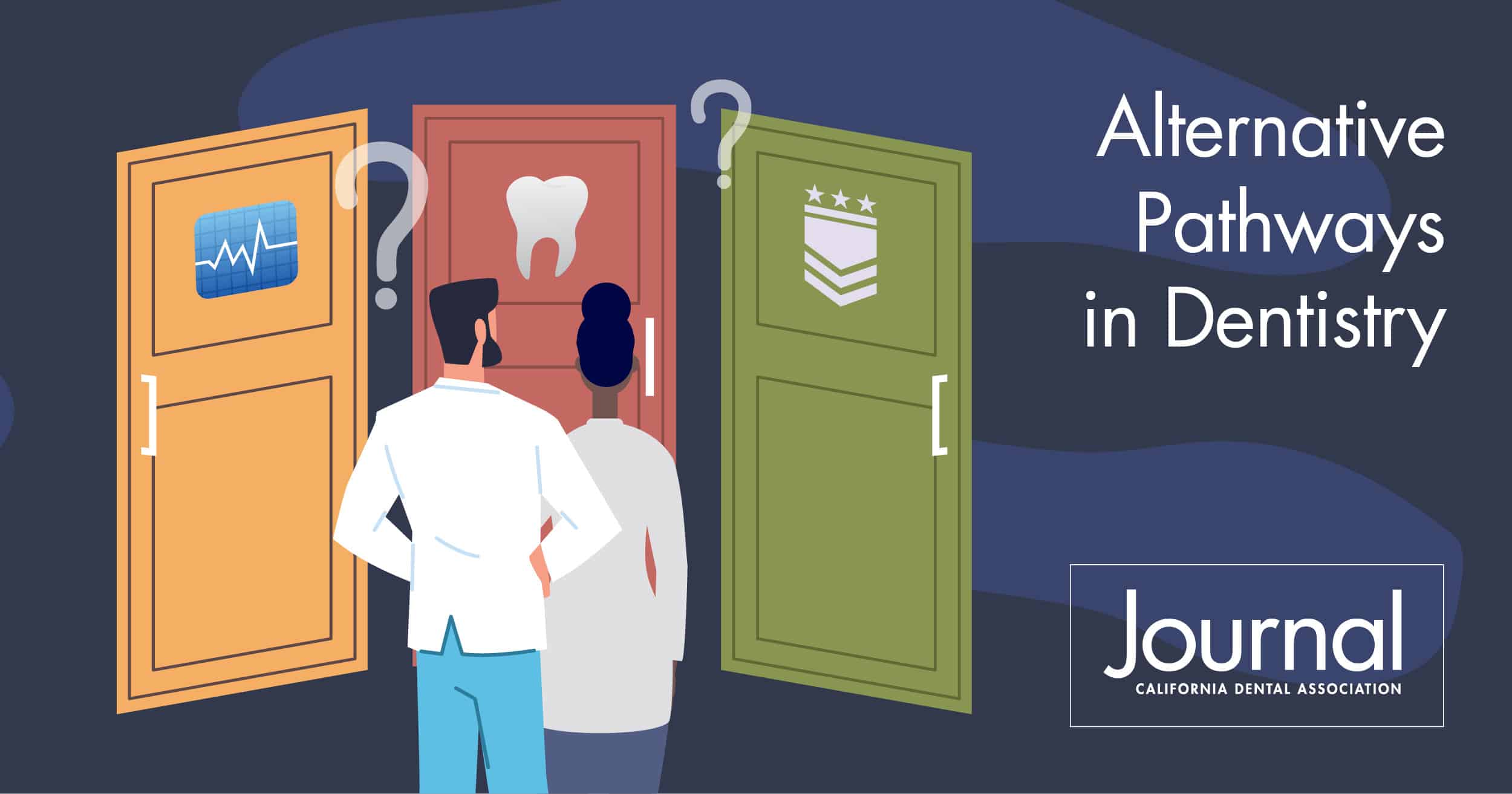“Private practices have been effectively taking care of the oral health needs of a large portion of the population,” writes Andrew Young, DDS, MSD, about the latest collection of the Journal of the California Dental Association. “But there are other significant areas of dentistry that are not effectively addressed by them.”
The collection “Alternative Pathways in Dentistry” informs dentists, dental hygienists, dental assistants and students about career opportunities outside the typical clinical experience.
Also, dentists can read about the role of federally qualified health centers and the career options they offer, then successfully complete an online quiz to earn C.E. credit.
Advantages and challenges of working at federally qualified health centers
Dentists who work at federally qualified health centers face unique advantages and challenges that are not encountered as frequently in other dental settings, such as the opportunity to provide culturally competent, low-cost, integrated care to underserved populations.
In the article “Alternative Pathways in Dentistry: Working at Federally Qualified Health Centers,” authors Rosa Arzu, DDS, MBA, Alamelou Radjindrin, BDS, DDS, and Sridevi Ponnala, BDS, DDS, MBA, provide an overview of FQHCs — from how they act as a “safety net” for uninsured, underinsured and underserved populations to how they generate revenue — and discuss the advantages and challenges FQHCs present for the dental professionals who work in them.
“By choosing to work in FQHCs, dentists can contribute to improving the oral health and overall well-being for some of the most vulnerable members of their communities,” the authors write.
Dentists: Read the article and take a short quiz to earn 0.5 units C.E. credit.
Practicing in dental public health: Real-world examples, future opportunities
As one of the 12 recognized dentistry specialties, dental public health serves the community, rather than the individual, as a patient.
The comprehensive training of dental public health programs prepares graduates for diverse career opportunities ranging from faculty positions in academic institutions to director and leadership positions for nonprofit organizations or local or state health departments.
In “Dental Public Health Practice: Improving the Health of California Communities,” authors Jayanth Kumar, DDS, MPH, Sepideh Banava, DDS, MSc, MPH, Lisa Berens, DDS, MPH, and Lynn Walton-Haynes, DDS, MPH, provide real-world examples of how dental public health practitioners have contributed to improving the oral health of Californians, such as using data to advocate successfully for a statewide law that created the kindergarten oral health assessment — a requirement for children attending public schools.
The authors also discuss how dentists can help shape the future of dental public health, stressing that having competent DPH practitioners requires “robust education and training programs with a community focus that offers multiple pathways.”
Mobile dental clinics address greatest barriers to care, offer dental teams flexibility
The mobile dental clinic provides dental teams an opportunity to serve communities that experience the greatest difficulty accessing traditional dental clinics. As an alternative pathway in dentistry, mobile clinics offer dentists and their teams flexibility while simultaneously addressing social determinants of health, like education and transportation barriers.
Author Logan Lehnart and Yogita Thakur, DDS, MS, discuss the successful implementation of a mobile dental clinic program in the San Francisco Bay Area, the effectiveness and challenges of using mobile dental clinics and how to better ensure an effective mobile dental clinic program in the article “Alternative Pathway in Dentistry: Mobile Dental Clinics, Illustration of Implementation in San Mateo and Santa Clara County Through Federally Qualified Health Center.”
“In the era of accountability, it is critical to recognize and address barriers that prevent patients from seeking care,” the authors write. “Mobile programs are a viable way to provide dental services, and dentists and allied dental professionals may find it satisfying working in mobile dental programs.”
Navy dentistry, academic dentistry and global opportunities
Three additional articles in this Journal collection discuss alternative pathways in dentistry:
- Academic Dentistry: You Might Be Surprised
- Navy Dentistry — Innovative and Collaborative Care
- The New ‘Golden Age’ of Dentistry: A Highly Desirable Profession with Unprecedented Global Opportunities in Industry Settings
Meanwhile, the regular Impressions department offers curated scientific news of interest to dentists, dental professionals and the greater oral health care community.

